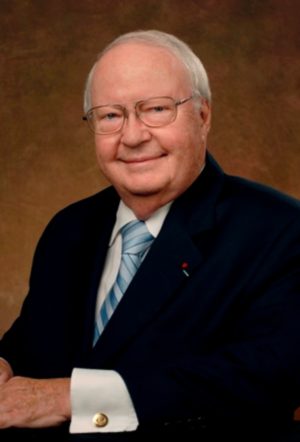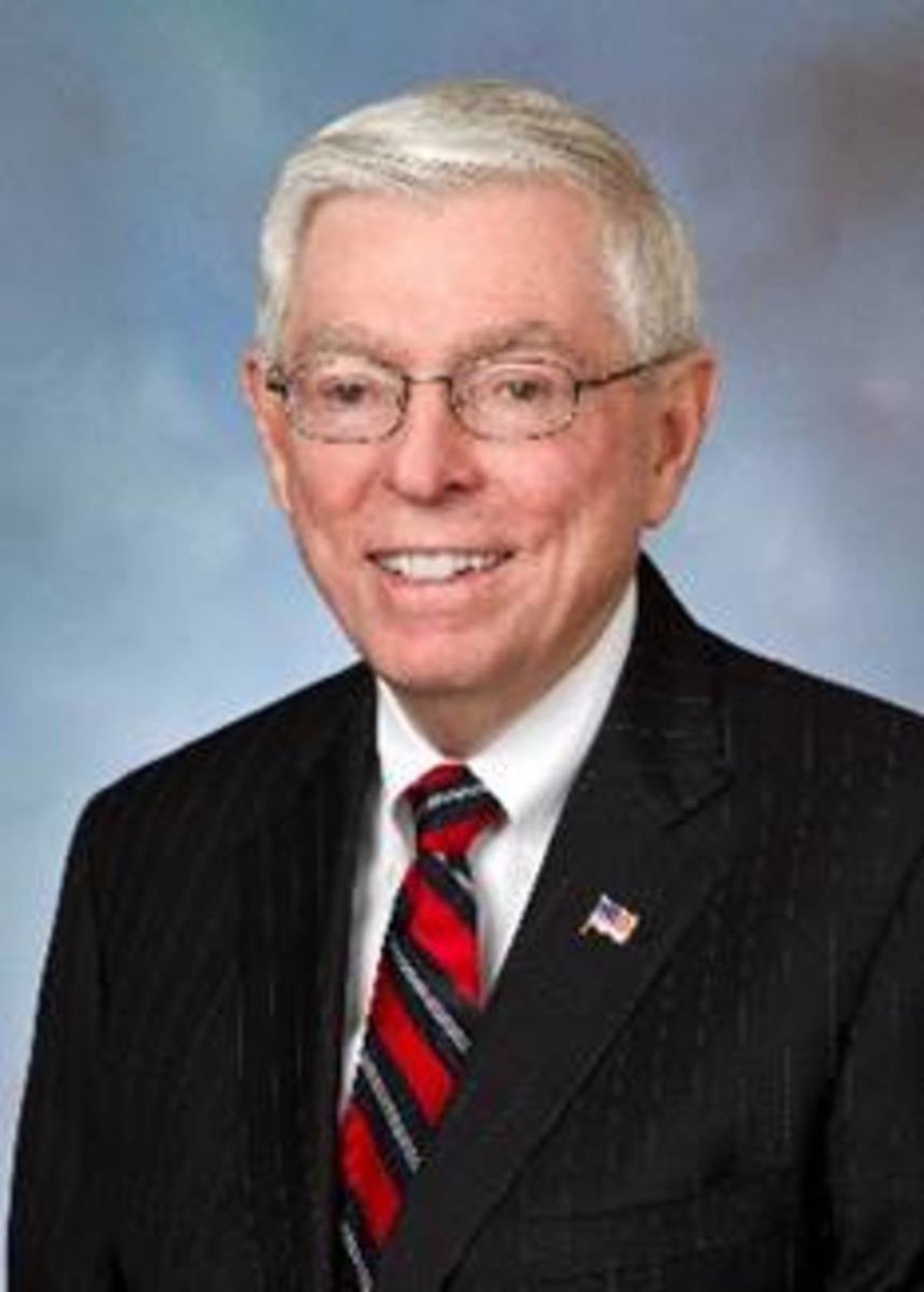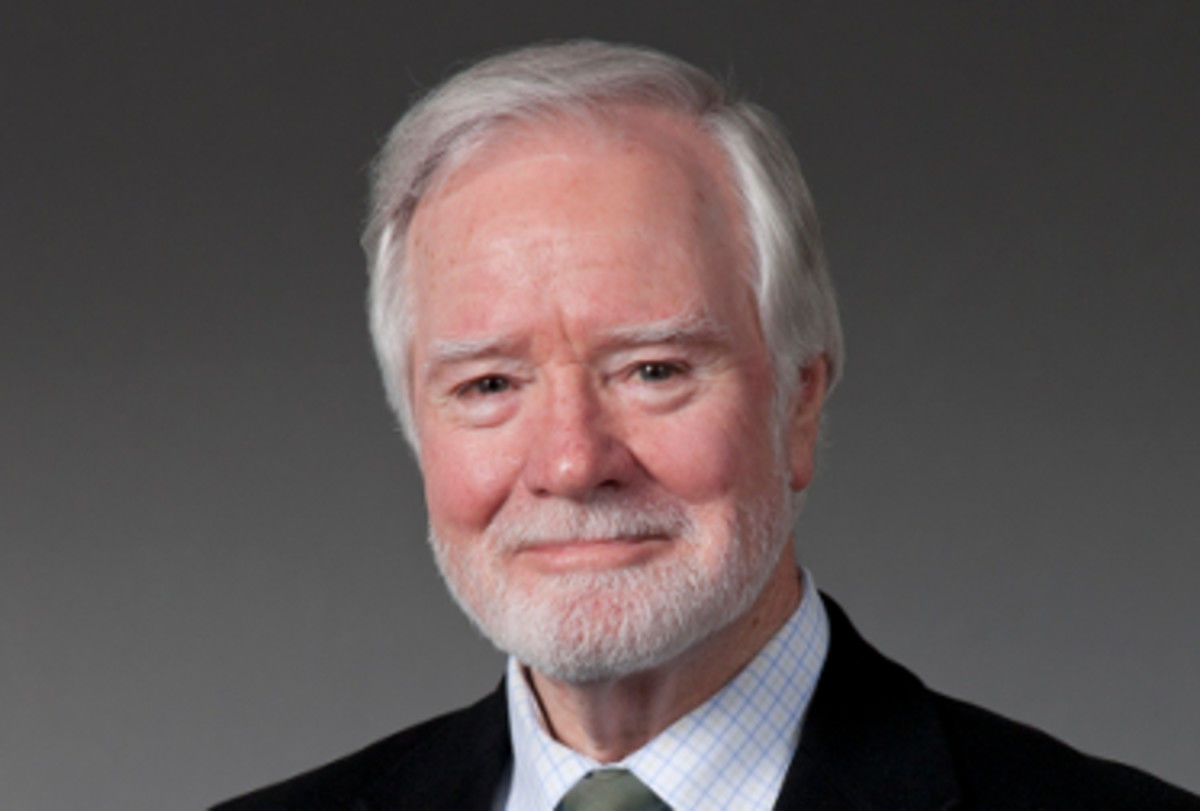

My Conversation with CBS VP Technology, Joe Flaherty…RARE HISTORY!
Dr. Joe Flaherty was the Senior Vice President of Technology at CBS and at the bottom of my story is an article with industry colleagues sharing their memories of the icon of television innovation.
There are few that have seen more television history than Joe Flaherty. There are fewer still that have made as much television history! I will not try and cover all that here, but will instead bring to light some interesting background surrounding several major events in CBS and broadcast history. As I try and boil down over an hour of conversation, I may do some skipping around from topic to topic, and our fist topic is the backstory on Norelco.
According to Joe, “If CBS is the Tiffany network, the BBC is the Gold network”. Although CBS had a couple of hundred engineers in research and development, the BBC had three times that many. In the early 60s, Dr. Flaherty, with a degree in physics was already moving up the ladder and was sent to England to see what he could learn form the BBC about some new black and white cameras they were using.
They were Phillips cameras and had this new Plumbicon tube in them that made great pictures. While there, he called Phillips and they sent a plane for him. He went to the plant in Holland and while there, asked if the Plumbicon would work for color. They had not given it much thought, but after that visit, they did. The result was the PC 60. In early 1964, Joe went back to Holland to take a look. There were problems with the red channel registration on those early PC 60s, but Joe was impressed and bought all 25 of them. Unfortunately, the plant in Eindhoven could only make 25 a year, so he bought a years worth of production. Soon after, Phillips set up shop in New York and began making the PC 70 there and at a much faster clip. CBS had ordered the first 75 and delivery began in 1965.
This was a busy period for Joe and CBS. In 1952, CBS bought a dairy depot from Sheffield Farms and had used it mostly for scenery storage, but with the studios at Grand Central Terminal getting cramped, and wanting to consolidated some of the many broadcast theaters throughout Manhattan, a change was needed. William Paley put Joe in charge of converting the building to the CBS Broadcast Center. By 63, some of the TV studios were up and running and master control moved from Grand Central in late 64 completing the move. With his intimate understanding of the Norelco color regime which was to come, he was the perfect man for the job.
Although the RCA TK10s and TK30 came long before Joe got to CBS in 1956, I did ask him about the unique striped band around the top of most of the cameras. For a long time, no one knew or could say why they were there. A few years back, Pete Fasciano, who developed the Avid editing system, was helping me with the art work for my TK11, which I dressed as a CBS network camera. When laying our the black horizontal stripes at the top and bottom and the alternating grey and white vertical bars, Pete realized this was actually a grey scale test pattern. I told Joe the story, he laughed and confirmed our theory. The amplitude was adjusted using the black and white bars and the frequency adjusted using the grey bars.
Speaking of grey…now we know why all the CBS equipment was painted ‘navy grey’. Joe could not remember the name, but one of the early chief engineers for the television network was an former admiral in the Navy. You can see where this is headed can’t you? Yes, it was his idea to paint all the equipment ‘navy grey’ so it would all match. This started in the mid 50s. Many theories have abounded, like ‘eye acuity’ and more, but…
By the way, one of the financial considerations involved in management signing off on the 100 camera Norelco purchase involved man power. For many years, CBS upper management referred to the RCA color systems as ‘NSCT’ systems, which stood for ‘Never The Same Color Twice’. For network quality, the RCA TK41s and color telecine chains needed one video man to shade each camera and chain. It was thought that with the Norelco cameras, one man could shade 6 cameras at a time. I’m not sure how that worked out.
William Paley would ask Joe to lunch about 4 or 5 times a year. Each meeting, Paley would ask “What are we not doing that we should be doing?” That’s a great question for a CEO to ask and Joe always had to do his homework before each meeting. One of those big ideas was digital and HDTV, which we’ll get to soon, but first, let’s go back to the early 60s and another of Joe’s big ideas…ENG cameras.
Joe said one of the great things about CBS news was, “They were always willing to try something that almost worked.” This is where the ENG cameras come in. Even before CBS became involved with Ikegami in 1962, they had built a couple of ENG cameras in house. Last month, we had trouble identifying a CBS ENG camera at a Gemini space launch…I’m betting that was one of the CBS/Ikegami custom built cameras.
CBS News wanted to go with ENG cameras but there were still a lot of kinks to be worked out with the cameras and with a mobile video tape recorder. In the early 60s, Joe began spending time in Japan where CBS had an engineering office. He worked with Ikegami on the cameras, and soon after with Sony on the VTR. To test this all out, the CBS owned station in St. Louis, KMOX became ground zero for ENG production. The confidential agreements between CBS and Ikegami and Sony paid off and long before the RCA TK76 came out in 1976, CBS was using custom made, Ikegami ENG cameras. As is noted in his bios, Joe was the real pioneering power in the field of ENG.
He is also called ‘The Father of HDTV’ and it’s true. NHK in Japan had come up with the idea and Joe was there collaborating with them in 1971. There are many online articles about his many contributions and I’ll let you Google those, but here is an interesting backstory of one of the fist demonstrations.
Francis Ford Coppola was there and told Joe that, in his opinion, HDTV was better than 35mm film prints. The 35mm negatives were better than early HD, but when prints are made for distribution, the resolution and colors break down. Among the early problems was the difficulty in seeing the HD broadcast signal as the early HD receivers were not up to par yet. This is reminds me of the problems at RCA in the early days of color. They had to build a monitor as good as the camera to see what they had.
Jumping to one more quick item, I had long wondered which CBS studio had the Dumont cameras. As it turns out, 4 studios had them…Studios 53, 54, 55 and 56 at Liederkrantz Hall were all Dumont equipped. Oh yes, and Joe is the only man to have ever redone The Ed Sullivan Theater twice! Once in 1965 for color, and once again when David Letterman came to CBS.
Dr. Joe passed in 2018, but he is well remembered! https://www.twice.com/industry/remembering-dr-joe-flaherty
TV Technology, a TWICE sister publication, reached out to some of his industry colleagues for their remembrances of Joe.
Peter Fannon was president of the Advanced Television Test Center and recently retired after a long career with Panasonic.
“It is very hard to imagine a television world without Joe Flaherty. He was—over six decades—a persistent force for global technological progress and industry advancement. Whether responsible for conceiving, building, or integrating new technologies and systems, Joe was a master at inspiring—and yes, sometimes terrifying—others in order to accomplish with him the progressive changes he could foresee would improve television for both content creator and broadcast company, for both TV viewer and online consumer alike.
His personal drive was, to be sure, formidable. He was relentless in pursuit of the new and better, the smarter and more efficient ways in broadcast and satellite spectrum use, studio and newsgathering design, camera and recording technologies, computer-generated imaging, facilities and network interconnection, and display technologies of all sorts. Throughout his career he supported or led research and development in-house, and he worked tirelessly with manufacturers around the world to bring to life new concepts in all of these arenas. He spent uncountable time traveling and working with broadcasters in all parts of the globe, and in international standards bodies, seeking to align ever-improving television technologies in order to effect easy global program exchange, and to spur competition for the best solutions whatever the issue.
Most famously, it was Joe Flaherty who first propelled the notion of high-definition TV in the United States, calling up all his persuasiveness to rally engineering, business and then political forces to bring “advanced television” to American broadcasting. Under the aegis of the FCC’s Advisory Committee on Advanced Television Service (ACATS)—which he had lobbied to have created—he chaired the all-important Planning Committee, which set out the technical and operational criteria for what became, barely a decade later, the world’s first all-digital HDTV terrestrial broadcast system.
And during that time he gave time and attention to every advanced TV system proponent in order to solicit the best ideas; participated in every Advisory Committee meeting and activity; served on the Board and technical committee of the Advanced Television Test Center; spoke frequently to domestic and international gatherings about the television of the future; and lobbied Members of Congress, Commissioners of the FCC, and both White House and Federal agencies’ leaders on the need and means for a smooth, nationwide transition to the new system.
It will be impossible indeed to see and enjoy television at all without thinking often of the passion, commitment and contributions of Joe Flaherty to making it all happen.”
Richard Wiley is former chairman of the FCC, chairman of the Advisory Committee on Advanced Television and is partner at Washington, D.C., law firm Wiley Rein.

“I worked closely with Joe during the eight-plus years of ACATS (FCC’s Advisory Committee on Advanced Television Service). He always kept his eye on the end game—high definition television. We had people suggesting systems that were lesser than HDTV but that was never going to be satisfactory from his standpoint. He helped develop the rapid deployment of HDTV on a worldwide basis and I learned a lot by reading a number of his papers.
He was a true visionary and could find pragmatic solutions to the innumerable technical problems that we confronted during those eight years. For example, when we had to test these different systems, he went to the NAB to lobby for developing the Advanced Television Test Center—he was instrumental in getting it built.
I went with Joe on many international trips and everybody knew him, he was the ambassador for television at large. He was known worldwide and I don’t think anyone else had that status—he was a unique figure. He was soft spoken but determined. He might have ruffled some feathers from time to time but he had a dream. He and Mark Richer were the two engineers I relied on the most because they would always give me the unvarnished truth as they saw it.”
Larry Thorpe is Senior Fellow at Canon U.S.A. and spent more than 20 years at Sony Electronics pioneering the development of HDTV and digital production technologies in the U.S. broadcast and motion picture industries.

“My positive response at an initial meeting with Joseph Flaherty in the mid-1970s was probably the fact that we were both of modest physical stature. But I was soon to learn that his industry stature soared far above my own. Maybe it was my being Irish that formed the early bond between us (he regularly vacationed in Ireland). While that manifested itself largely in cordiality over the next decade whenever we sporadically met, it was to blossom into a working bond in the early eighties when then Dr. Flaherty learned that I was Masahiko Morizono’s point man on driving Sony’s HDTV agenda in the U.S. The very close relationship between those two giants was forged more than a decade earlier when Joe Flaherty’s drive behind electronic newsgathering was flanked by Morizono-san’s drive behind ENG cameras and recorders—first the Umatic and later the Betacam.
At a time when HDTV was looked askance at by most broadcasters, Joe Flaherty had instantly seen the future of video imaging and indeed the future of broadcasting. If he was relentless in his drive on ENG, he was positively titanic in his unwavering leadership on HDTV. His vision of 1080/60.00 as a potential worldwide HDTV production standard never faltered over the next decade and a half. I spent countless hours with Joe at endless formal meetings of the various HDTV standardization groups, the multiple strategy sessions within CBS, and supporting the never-ending demonstrations that he organized at every conceivable venue around the globe. While the latter could at times create tensions between us, Joe would always make things right with a fine-dining lunch or dinner.
Leadership emerges under various guises but Joe Flaherty based his on a sharply focused determination that was at times disguised by his remarkably quiet voice. Entanglements with the separate and competing HDTV agendas of European broadcasters, the computer industry, and Hollywood never daunted Joe. His international diplomacy was unwavering as he sought to persuade all to his mission of a unified HDTV standard. And indeed, Joe could be uncannily persuasive. The emergence of the worldwide 1080-line HDTV standard (albeit at international frame rates) is testament to his persistence.
I was sad to see Joe fade quietly from the world scene over the past decade—but impressed and heartened by the fact that he was in his eighties when he did start to withdraw. Everything he dreamed about over the past 50 years—from ENG to HDTV—are today colossal global realities. Joe Flaherty can surely rest in peace having left a legacy of jobs superbly done. Goodbye, my mentor.”
Mark Richer is president of the Advanced Television Systems Committee.

“Dr. Flaherty’s lifetime commitment to the advancement of television technology was extraordinary. Among his many contributions to the industry was the pivotal role he played in the formation of ATSC in 1982. He served on the ATSC Executive Committee and Board of Directors until 2010 when he was named to the honorary “Member Emeritus.”
Dr. Flaherty’s unwavering commitment to the standardization of HDTV was contagious, motivating the industry to develop the highest quality system possible. He had the vision to understand that the specifications for HDTV should not be limited by the capabilities of the cameras and displays available at the time.
Joe pushed industry groups to establish long term strategies often quoting one his favorite proverbs, “If you don’t know where you’re going, any road will take you there.”
Gary Shapiro is president/CEO of the Consumer Technology Association (CTA). The group issued the following statement shortly after Flaherty’s passing.

“Joe Flaherty was a visionary who believed the American HDTV standard should be the highest-possible quality. Throughout his decades as a CBS executive, he advocated for better national and global standards for all broadcasters. Joe often called me and urged me to take a strong position in favor of broadcast quality, and I never failed to heed his advice. Today, people around the world enjoy a richer TV viewing experience than ever, in no small part because of Joe’s focus on excellence. We have lost a true industry legend.”
Thanks for the great work Bobby! I love this page!
Nice article! I had the opportunity to meet Dr. Joe Flaherty in 1979 when I was consulting for Francis Ford Coppola. I had earlier built the video edit system Francis used for Apocalypse Now. We were beginning to design the next system Francis wanted to use for One From the Heart. Since the next system would use Beta SLO 383’s instead of Umatic machines. Joe sent us a Betamax Sony had built up for the CBS light pen edit system CBS made. Joe had Sony make the shuttle times faster by using direct drive reel motors. This little Beta machine moved tape like a VPR-3.